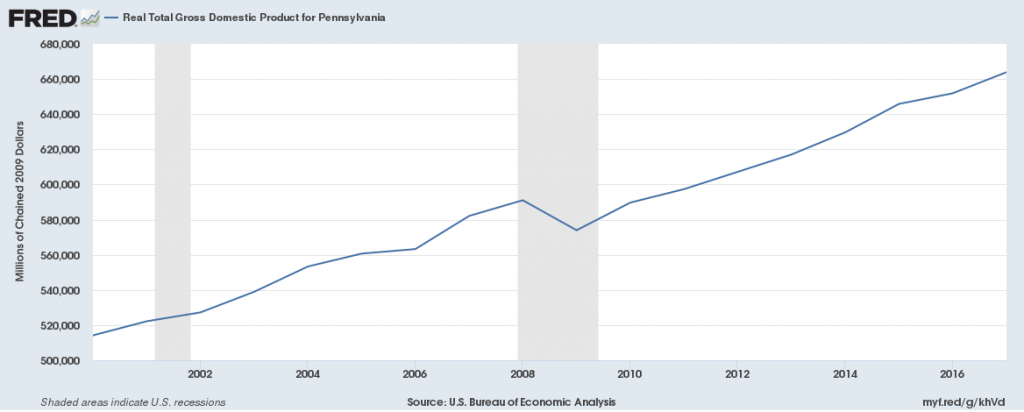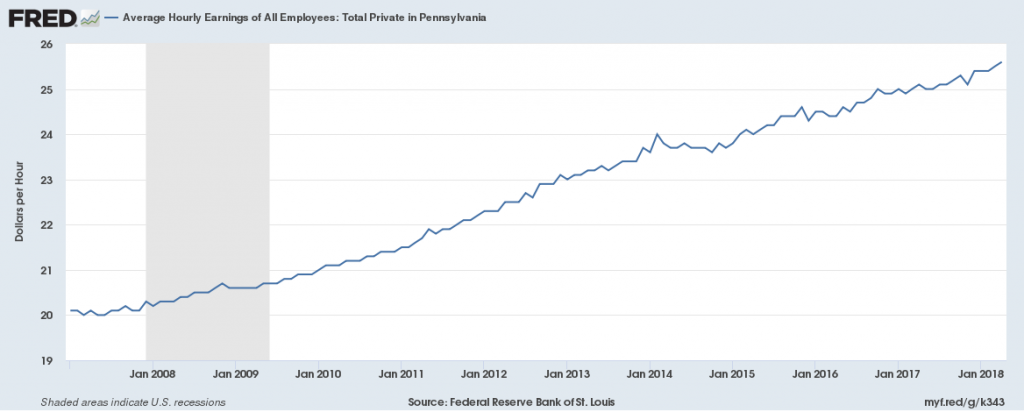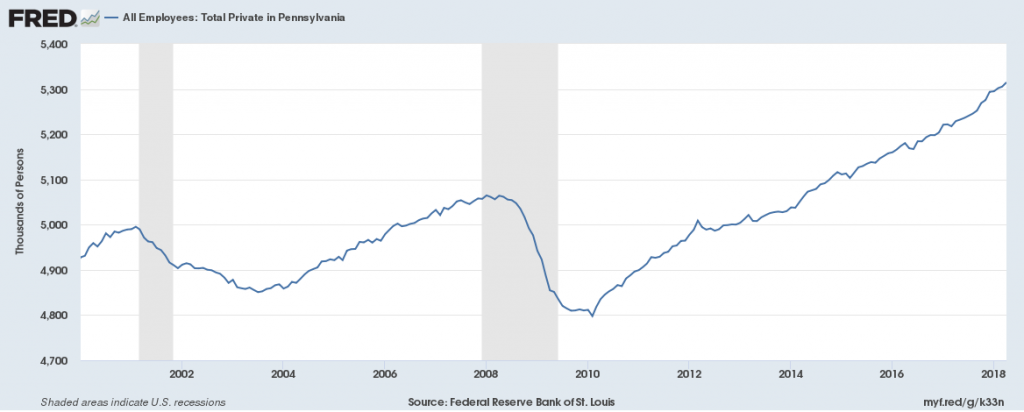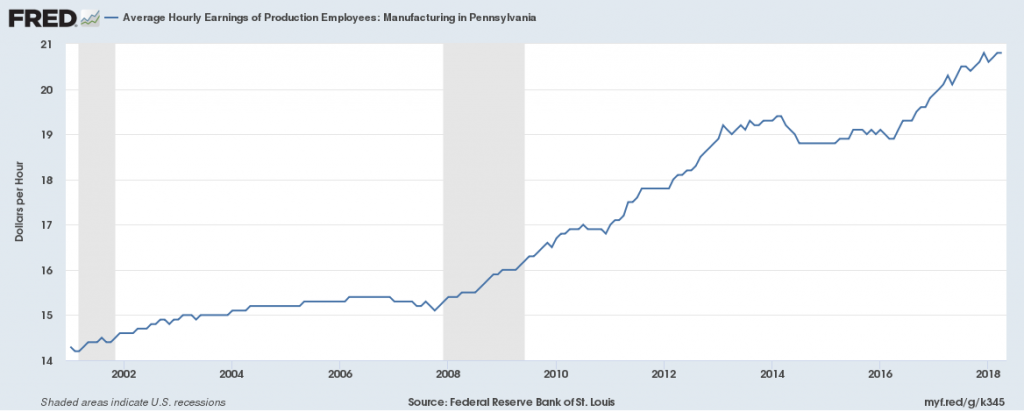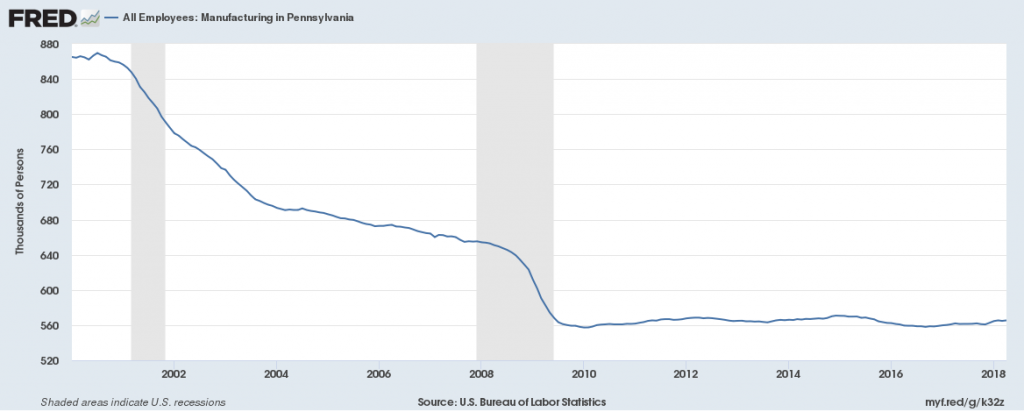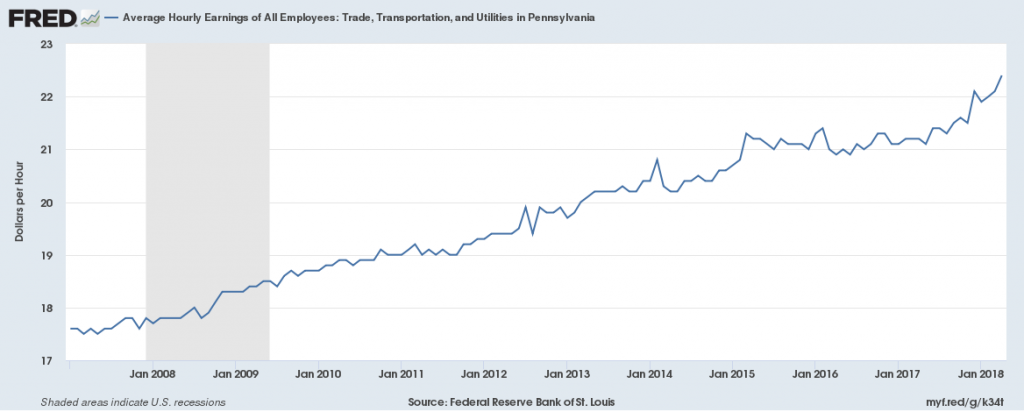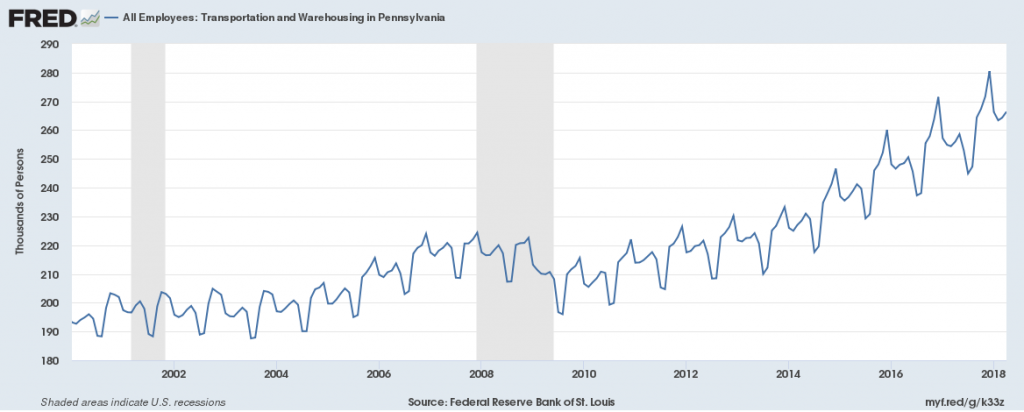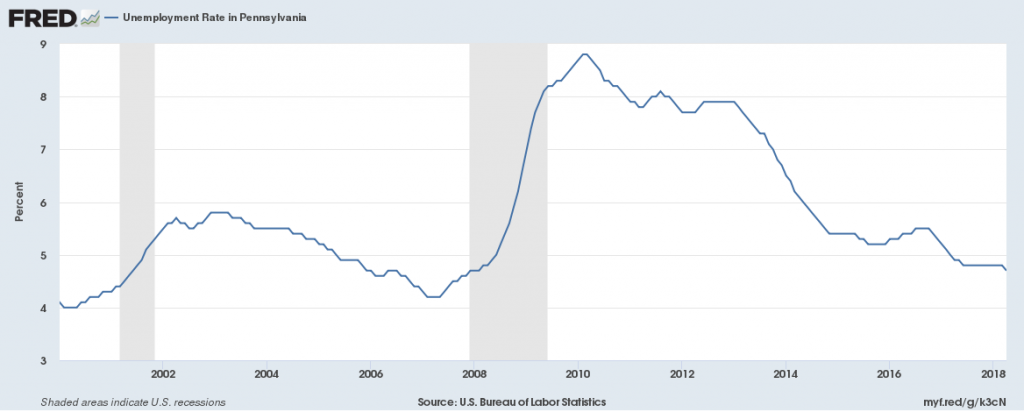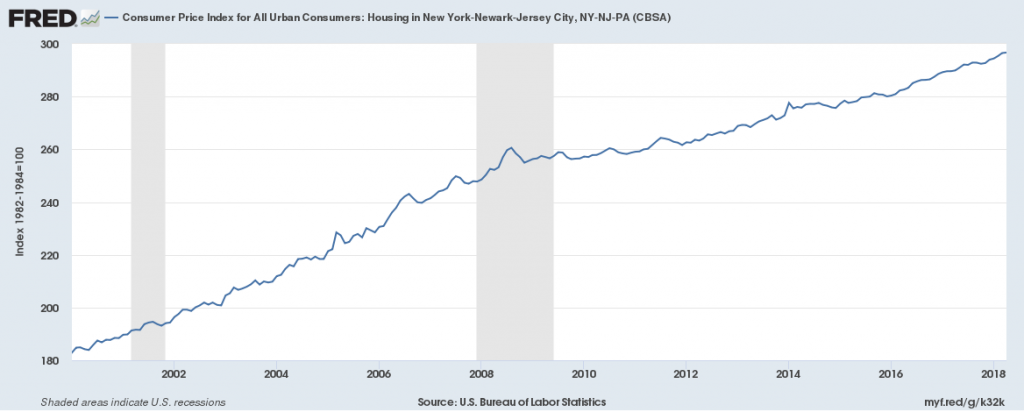Gross Domestic Product
Real GDP (a measure of economic growth) has been steadily since 2009, hitting a peak of $660 billion in 2017, exceeding the 2008 peak of $590 billion.
Jobs
Private-sector employers have added 500,000 jobs since 2010, the national low point for private-sector employment and 150,000 more jobs than before the recession. From 2017 to 2018 the private sector has added approximately 80,000 net new jobs. Average hourly wages in the private sector have been slowly increasing since 2008, going from $20/hr to $25.50/hr in 2018.
Manufacturing employment has been declining since 2000, especially during the 2008 recession, but steadied since then. There are currently 560,000 jobs in this sector in 2018, down from 865,000 in 2000. Average hourly wages of production employees has been rising steadily since 2008, growing from $15/hr in 2010 to $21/hr in 2018.
There were 200,000 jobs in the Transportation, Warehousing and Utilities sector in 2018, exceeding the 2001 high of 180,000. The average wage in the Transportation, Trade and Utilities sector was $22.50/hr in 2010 and $26/hr in 2018.
Unemployment
The unemployment rate in 2018 is 4.6%, the same as the year before. This is above the national average of 3.9% unemployment.
Housing
The House Price Index, a measure of the cost of housing, has declined since its 2007 high of 570. It has been increasing since 2012, hitting 520 in 2018, showing growing housing costs.






